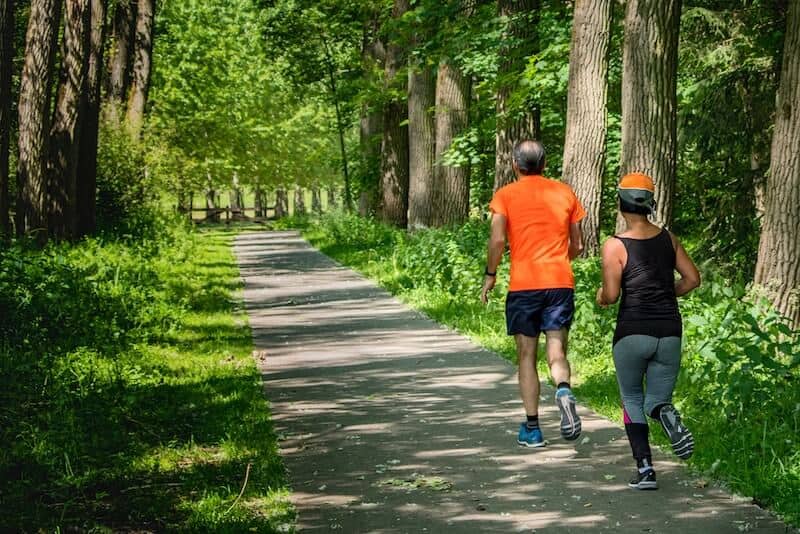How does exercise reduce the risk of serious health conditions?
Exercising is an essential part of a healthy lifestyle.
And while you may think working out is only good for aesthetic purposes and fitness, staying active has many other effects which benefit our entire body at a cellular level.
Exercise is as close as you can get to a magic pill. It seems like the right dosage of exercise can help almost any health condition!
Mentally, exercising boosts mood, improves cognitive function and reduces the risk of depression.
On a physical level, regular exercise is vital for our cardiovascular health, range of motion, hormone production and bone density.
Another amazing benefit of regular exercise is its ability to help protect us from developing serious diseases and health problems – including heart disease, diabetes and even some cancers.
People who exercise throughout their lives tend to suffer less from mobility and joint issues as they age, and maintain full range of movement in their bodies for longer.
So if you need some motivation to get off the couch, read on to discover just how exercise reduces the risk of serious health conditions.

Maintain a healthy body
It’s no secret that exercise can help us to maintain a healthy body weight, but there’s deeper elements at play when it comes to the benefits of working out on our bones and muscles.
Strength training also boosts bone density, which can help protect against osteoporosis and fractures as we age.
In addition, practising regular weight-bearing exercises strengthens the tendons and joints which surround our bones, helping us to maintain our balance and range of movement for longer – as well as protecting us from the risk of arthritis.
A healthy body isn’t defined by a number on the scales, and it’s important to consider your body composition when determining your health.
Regularly working out, even at a low intensity, helps to keep your muscle mass and fat percentage in check.
Excess body fat can lead to serious health conditions such as high blood pressure, diabetes and stroke. We now know that it can also be a trigger to low level systemic inflammation that is involved in many health conditions, including persistent pain.
Improve cardiovascular health
The benefits of keeping up with your cardiovascular health are widely advertised, and for good reason.
The heart is a muscle (arguably the most important muscle in the entire body) and therefore it’s vital to keep it strong and healthy.
Exercises that raise your heart rate boost blood flow and improve the health of your entire cardiovascular system, which has a big impact on longevity and quality of life as we age. Regular cardio-focused exercise can also decrease the risk of heart disease and help to lower blood pressure.
For people with existing health conditions such as peripheral vascular disease and forms of arthritis (including osteoarthritis and gout), cardio is excellent for increasing blood flow.
Movement is essential in osteoarthritis as a way of improving cartilage heath from the compression (squeezing out) of cartilage and the exchange of nutrients to the cartilage that it facilitates.
Movement and cardio is also important for people who suffer with gout as it helps to flush the uric acid crystals through the bloodstream – potentially preventing them from collecting around the joints and causing a flare up.

Live happier
The positive effects of exercise are not restricted to our physical abilities.
Mentally, the brain reacts extremely positively to regular exercise, making us feel instantly happier and boosting our overall mood.
There are social benefits if exercise is done in a group or with friends, which can’t be underestimated in our increasingly isolated society.
The neuroscience of exercise is fascinating, and highlights just how intrinsic staying active is for our well being and longevity.
Cardiovascular exercise can help to grow our hippocampus, the area of our brains responsible for problem solving and memory. Exercise helps learning and retention of information.
It also protects the vital grey matter of our brains, which may help to protect us from neurological health conditions such as dementia.
All forms of exercise also directly affect the hormone production within our brains, boosting our endorphin levels. This reduces stress and helps us maintain a positive mood and outlook.
Regular physical exercise also helps to improve our quality of sleep, which in turn promotes effective healing and restoration of the entire body throughout the deep stages of REM sleep.
If you suffer from insomnia or sleep disorders, regular physical activity can help to get you back towards sleeping soundly.
It’s never too late to start exercising
Whether you’re 20 or 80 years old, experienced or a newbie to exercising, the wonderful thing about exercise is that it has immediate, tangible benefits to our health.
From the initial boost in mental clarity and mood, to the lasting and protective effects of strengthening our entire bodies – it’s never too late to start exercising and protecting yourself from the risk of developing serious health conditions.
Other articles that might be of interest:
How To Keep Your Cartilage Health (Even With Osteoarthritis) – Osteoarthritis doesn’t mean a one way trip to joint replacement. There is a lot you can do to improve cartilage health.
Exercise: Why Do More Than The Minimum Amount – How much exercise should you do? Is there any benefit to doing more than the minimum? Short answer: YES!
How To Make Exercise A Habit – The goal with exercise is that it just happens, it is just part of your week. But how do you get to that point?
The Ultimate Guide To Low Back Pain Physio– Exercise is a crucial part of rehabilitation from persistent low back pain. Read this article to find out more about how exercise fits in to the overall solution (spoiler: it’s much more than ‘core strengthening’!)














